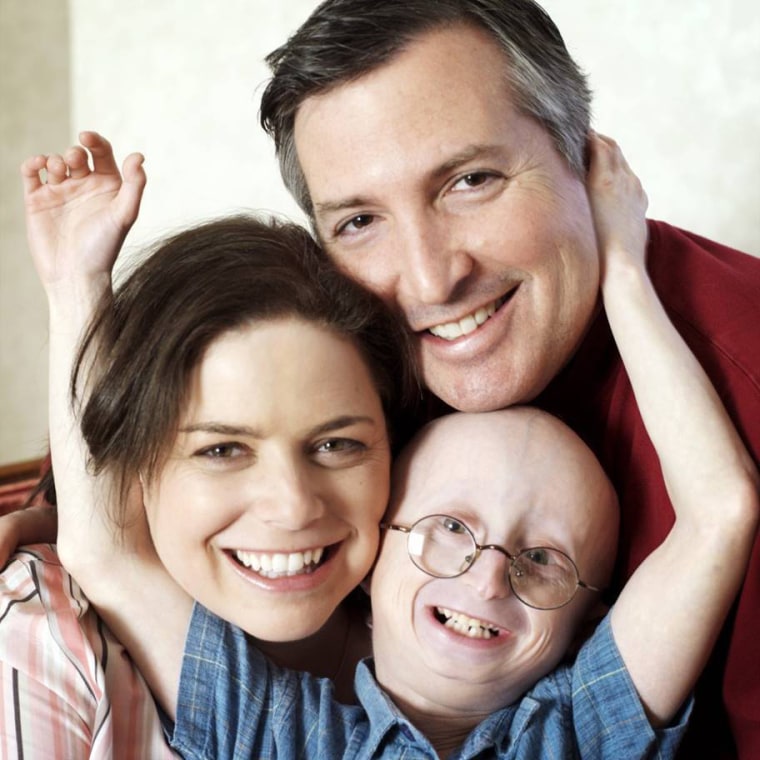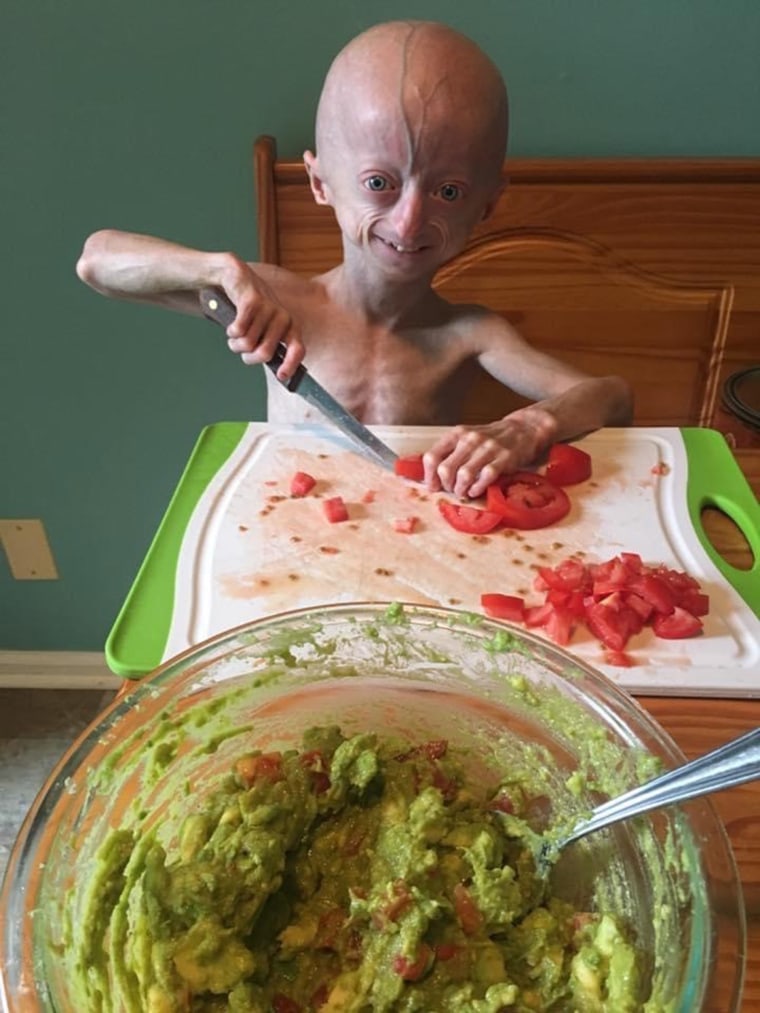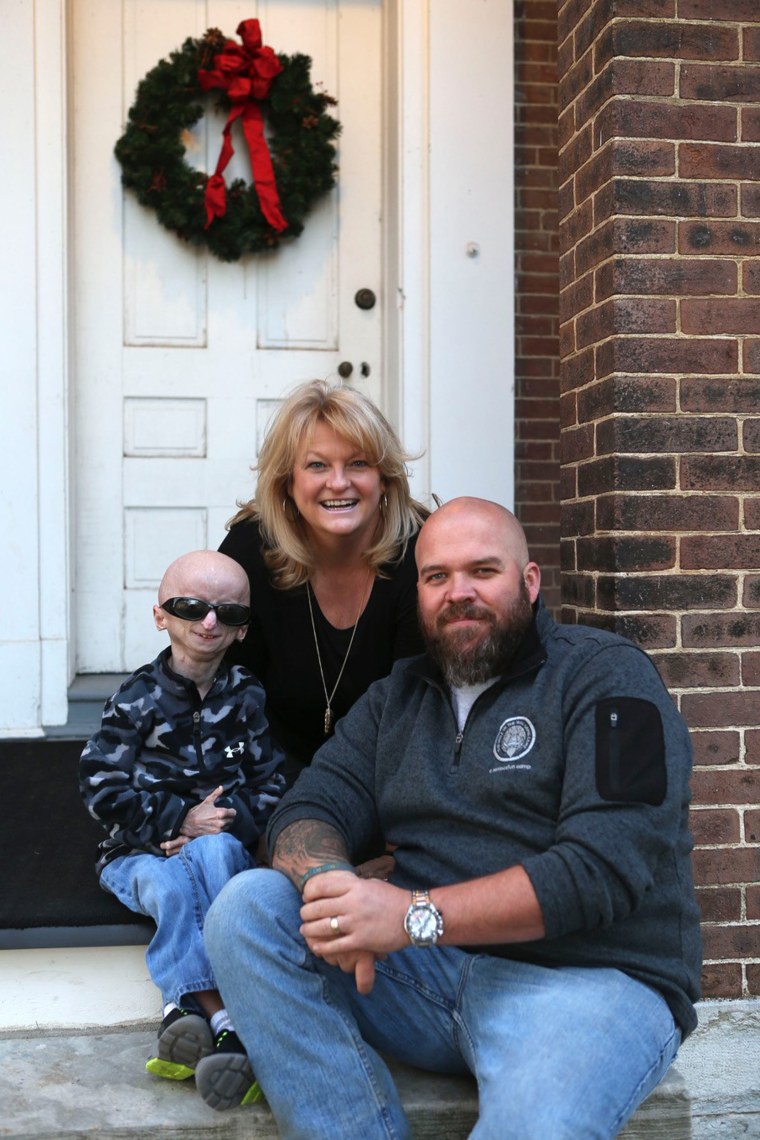When Dr. Leslie Gordon’s 2-year-old son Sam was diagnosed with progeria back in 1998, she had no idea what it was. Even as a medical doctor with a Ph.D., she’d never encountered the syndrome in all her years of school.
“Progeria is an ultra-rare disease,” she told TODAY Parents. “We did what any parent would do: We dropped everything and tried to figure out what was going on. What could help him? Were there any experts in the field? Were there any treatments? Was there someplace to go for information? And we discovered there was absolutely nothing out there.”
That led Gordon, her husband, Dr. Scott Berns, and her sister, Audrey Gordon, to start the Progeria Research Foundation to try to find a cure for the confounding condition. Progeria’s signature trait is rapid, premature aging; most children who have it die as teenagers. That made Gordon’s race against the clock even more urgent: Would the foundation make enough progress in time to save Sam?

Sadly, Sam Berns died in 2014 when he was 17. Gordon and others at the foundation kept working, though — and all that hard work is finally yielding the gift of time.
In late 2020, the U.S. Food and Drug Administration approved the use of a drug called lonafarnib in children with Hutchinson-Gilford progeria syndrome. The medication can increase their lifespans by 2.5 years — a significant increase, since children with the condition live an average of 14.5 years. It is the first and only approved treatment for this form of progeria.
“It’s incredibly exciting to see this come to fruition,” said Gordon, whose foundation was instrumental in helping the new drug become a reality.
Still, Gordon tempered her enthusiasm about the new treatment with a hard truth.
“It’s a jumping off point,” she said, “but it’s not a cure.”
‘Highly motivated’ parents
According to the National Organization for Rare Disorders, Hutchinson-Gilford progeria syndrome occurs in about one out of 20 million people, which means about 400 children have it worldwide. Children with the condition have normal appearances as babies, but then their features begin to change. They lose their hair and have small faces compared with their heads, oversized eyes, tiny noses and a blue tinge around their mouths. The disorder does not compromise cognitive abilities, but children with it experience cardiovascular disease that is fatal.
After Sam’s diagnosis, Gordon threw herself into research through the Progeria Research Foundation. As a physician scientist, she had insight into what was needed. She started a tissue bank in her lab and created a national registry — things researchers needed to help them study progeria. Then the foundation started funding research grants. Meanwhile, Gordon devoted herself to Sam.
“Our goal was to give him, and all the other children with progeria, a great life,” she said. “I think that’s what he had.”
Before his death in 2014, Sam gave a moving TEDx Talk about living a happy life that has been viewed by nearly 60 million people. His story also was chronicled in the 2013 HBO documentary “Life According to Sam.” For the most part, Sam’s young life was very much like that of other children and teens: He listened to music, read comics and cheered for Boston sports.
“Anybody who has met a child with progeria or met Sam, you’re in. You become completely involved and never want to pull away,” Gordon said. “The kids are so courageous and motivating.”
Sam certainly inspired Gordon.
“There’s nothing like a parent to be highly motivated to not accept ‘no,’” she said. “We were just going to do this and make progress and push the field.”
In 2002, a gene mutation for progeria was identified, which meant that more research could be conducted. Mouse models were created, allowing researchers to test treatments. This eventually resulted in the recent FDA-approved drug. While the foundation’s work focuses on curing progeria, increased knowledge about the disorder also can lead to a better understanding of aging and cardiovascular disease.
“Children with progeria are undergoing an accelerated timeline with atherosclerosis (or artery disease), and atherosclerosis is what we all slowly get in our 50s, 60s, 70s, 80s,” Gordon explained. “But it's happening at a tremendously high rate in the children with progeria, and this is really what kills them.”
The future for children with progeria
Zach Pickard, a 13-year-old who has progeria, is really interested in cooking. He often tries new recipes in the kitchen, but says pizza is the best thing he makes. For his birthday, he visited Las Vegas and had the chance to eat at a Gordon Ramsay restaurant. The caustic British chef is his favorite.
“It was awesome,” he told TODAY Parents. “We had a really good experience there.”

For the past 10 years, Pickard has taken lonafarnib as part of a clinical trial. It seems to be helping him.
“A far as a child with progeria, the heart is the important thing, the arteries and stuff. He's looking pretty good,” said Zach’s mom, Tina Pickard of Lexington, Kentucky. “He had already lost his hair, but he hadn't really developed any other symptoms since he's been on the treatment.”
Zach does have hip problems, common in children with progeria, and he uses a wheelchair. But that doesn’t stop him from doing the things he loves, such as playing video games and hanging out with friends. When he’s not cooking, gaming or cracking jokes, he’s a straight A student who loves math.
“He passed Brandon and I a long time ago,” Tina said. “We can no longer help him. He was on the math team last year.”

Zach agrees that having progeria doesn’t really hold him back.
“It makes me smaller. That’s about it. It doesn’t really affect me that much,” he said. “It is just who you are.”

He and his family are thrilled that other children with progeria will have the same opportunity for treatment that he's had.
“We're happy. I told him back when this drug was getting approved, ‘You and your progeria friends ... are trailblazers,’” Zach’s mom said. “We like the treatment, but we want a cure. We're so close.”
CORRECTION (Jan. 11, 2021, 12:28 p.m.): An earlier version of this story called Audrey Gordon, Ashley Gordon.